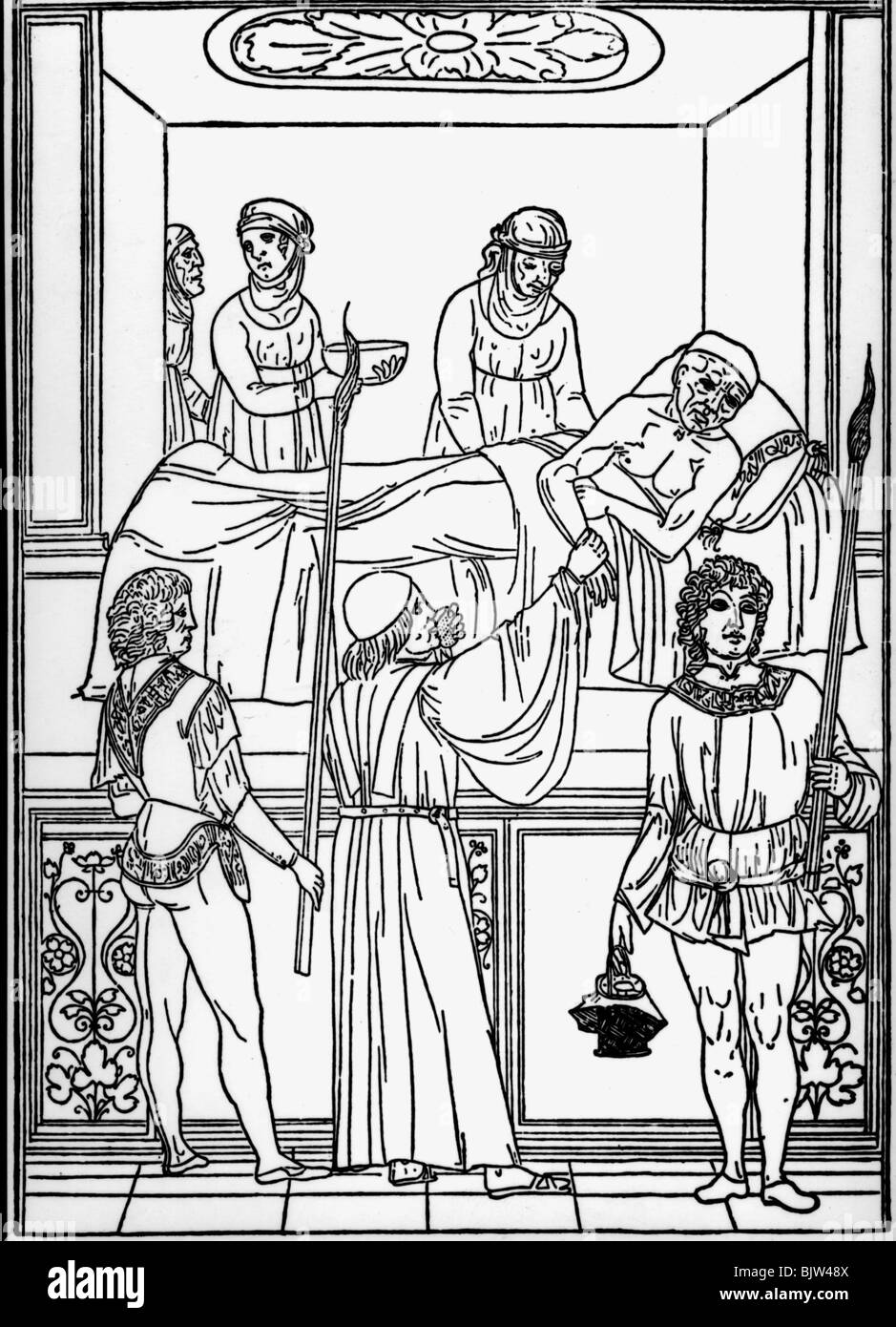
Ultimately, at least one third of the European population (more than 25 million people) died between 13 from the Black Death. 10, 11, 12 In Europe, plague-stricken citizens were often dead within a week of contracting the illness. The second pandemic or Black Death arrived in Messina in Sicily, probably from Central Asia via Genoese ships carrying flea-laden rats in October 1347, which initiated a wave of plague infections that rapidly spread across most of Europe like a relentless wildfire. At least 18 waves of plague spread across the Mediterranean basin into distant areas like Persia and Ireland from 541 to 750 CE.

10, 11 The first pandemic or Justinian plague probably came from India and reached Constantinople in 541-542 CE. 9 In the biblical book 1 Samuel from approximately 1000 BCE, the Philistines experience an outbreak of tumors associated with rodents, which might have been bubonic plague. pestis plague DNA genome in 2 Bronze Age skeletons dated at roughly 3800 years old. 1, 2, 3 Molecular studies identified the presence of the Y. The plague has afflicted humanity for thousands of years. Blaming minorities for epidemics echoes across history into our current coronavirus pandemic and provides insightful lessons for managing and improving its outcomes. During the Black Death, Jews were blamed for the bubonic plague, perhaps because Jews carried FMF mutations and died at lower plague rates than Christians. Carriers of recessive familial Mediterranean fever (FMF) mutations have natural immunity against Y. Pneumonic plague can be weaponized for bioterrorism, highlighting the importance of understanding its clinical syndromes. We discuss symptomatology and treatment options. Transmission is by fleas carried on rats, although new theories include via human body lice and infected grain. This history of medicine review highlights plague events across the centuries.

Plague remains endemic in Madagascar, Congo, and Peru. Its causative agent is Yersinia pestis, creating recurrent plague cycles from the Bronze Age into modern-day California and Mongolia. Those afflicted died quickly and horribly from an unseen menace, spiking high fevers with suppurative buboes (swellings). During the fourteenth century, the bubonic plague or Black Death killed more than one third of Europe or 25 million people.


 0 kommentar(er)
0 kommentar(er)
